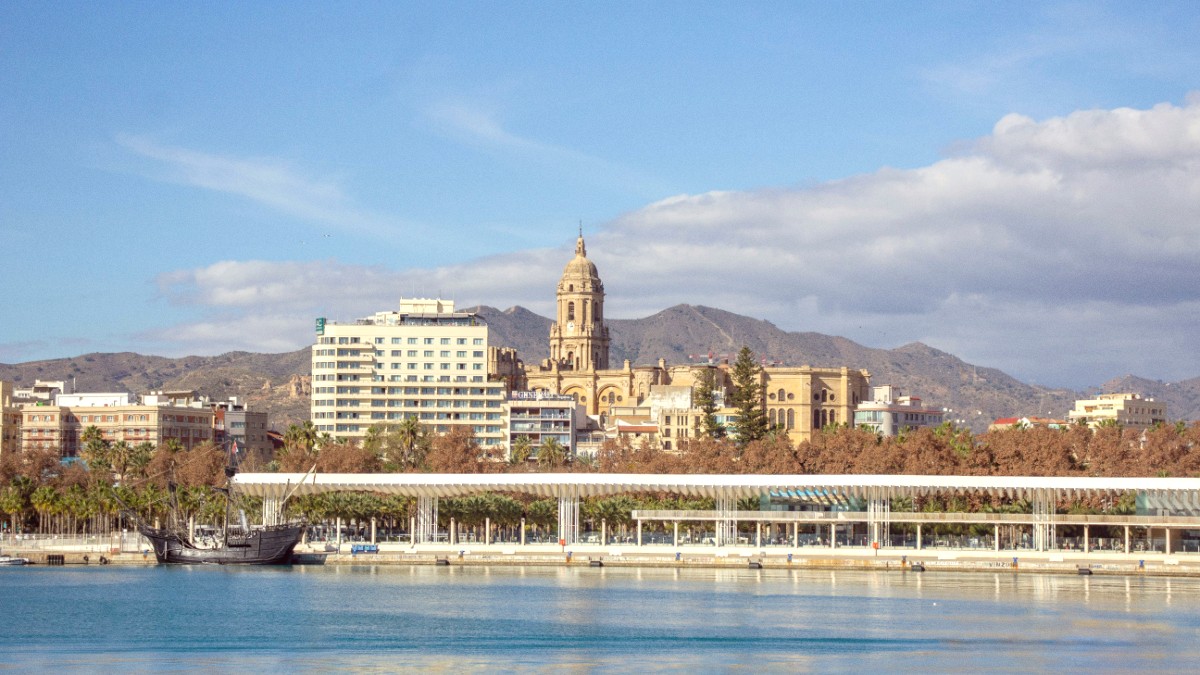
Andalucia, Spain
The city sits approximately 100 kilometers (62 miles) east of the Strait of Gibraltar, the narrow passage connecting the Atlantic Ocean to the Mediterranean. Its proximity to the African continent, about 130 kilometers (81 miles) north, has historically shaped its culture and trade. To its north, the city is cradled by the Montes de Málaga mountain range, a natural park offering a green lung and elevated viewpoints. The Mediterranean Sea forms its southern boundary, influencing the city's climate, economy, and lifestyle.
The metropolitan area extends beyond the immediate city limits, encompassing several other coastal towns and stretching inland. This urban and natural mix creates a diverse landscape with city centers, traditional villages, and natural preserves.
This varied geography presents opportunities for both seaside relaxation and mountain adventures, all within easy reach of the city.
Malaga features a history spanning over 2,800 years, making it one of Europe's oldest continuously inhabited cities. Its origins trace back to the Phoenicians, who established it as Malaka around 770 BC. This early settlement developed into a port, supporting trade across the Mediterranean.
Following the Phoenicians, the city became part of the Roman Empire, experiencing significant growth. Evidence from this era, like the well-preserved Roman Theatre at the foot of the Alcazaba, remains visible. Under Islamic rule, as part of Al-Andalus for nearly seven centuries, Malaga blossomed into a prominent city and major port, known for silk, ceramics, and agricultural products.
Establishment as Malaka, a trading port.
Period of growth and Romanization, Roman Theatre construction.
Flourishing as a major port and cultural hub, Alcazaba built.
Catholic Monarchs reclaim the city, Malaga Cathedral construction begins.
Birthplace of Pablo Picasso, continued maritime significance.
The year 1487 marked a turning point when the Catholic Monarchs, Ferdinand and Isabella, conquered Malaga, bringing it under Christian rule. This reconquest initiated a new chapter, leading to the construction of grand churches, including the iconic Malaga Cathedral. Beyond its ancient past, Malaga holds modern historical importance. It is the birthplace of Pablo Picasso, one of the 20th century's most influential artists.
The Phoenician presence laid the groundwork for Malaga's enduring maritime identity, with its port remaining one of the oldest and busiest in Spain.
The city's history is not merely a collection of dates but a living narrative visible in its architecture, traditions, and the character of its people.
This connection to Picasso greatly adds to the city's cultural identity, drawing art enthusiasts globally to explore his origins and artistic legacy.
Malaga presents a dynamic and welcoming experience for travelers.
This overview covers facts about the city.
City: ~586,384 (2023). Metropolitan: ~1.1 million (2023).
Municipality: 395 sq km (153 sq mi).
Spanish (Castilian), Euro (€).
Malaga-Costa del Sol Airport (AGP) serves as the main international gateway. Its close proximity to the city center and efficient public transport connections make arrival and departure smooth.